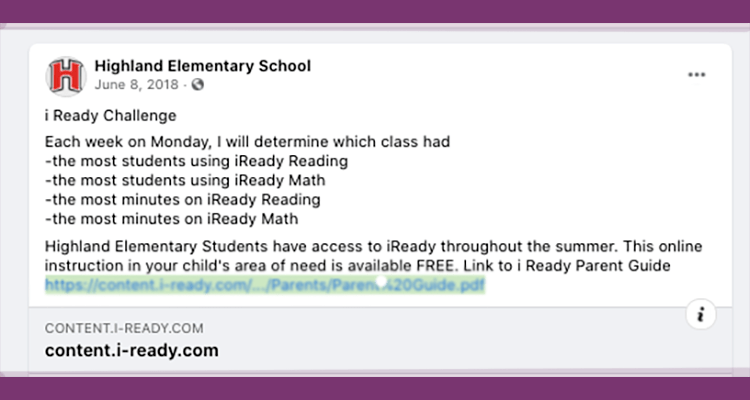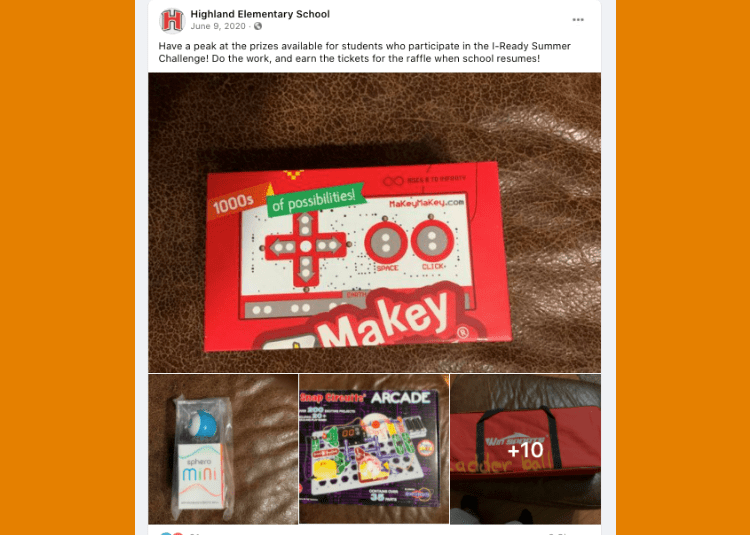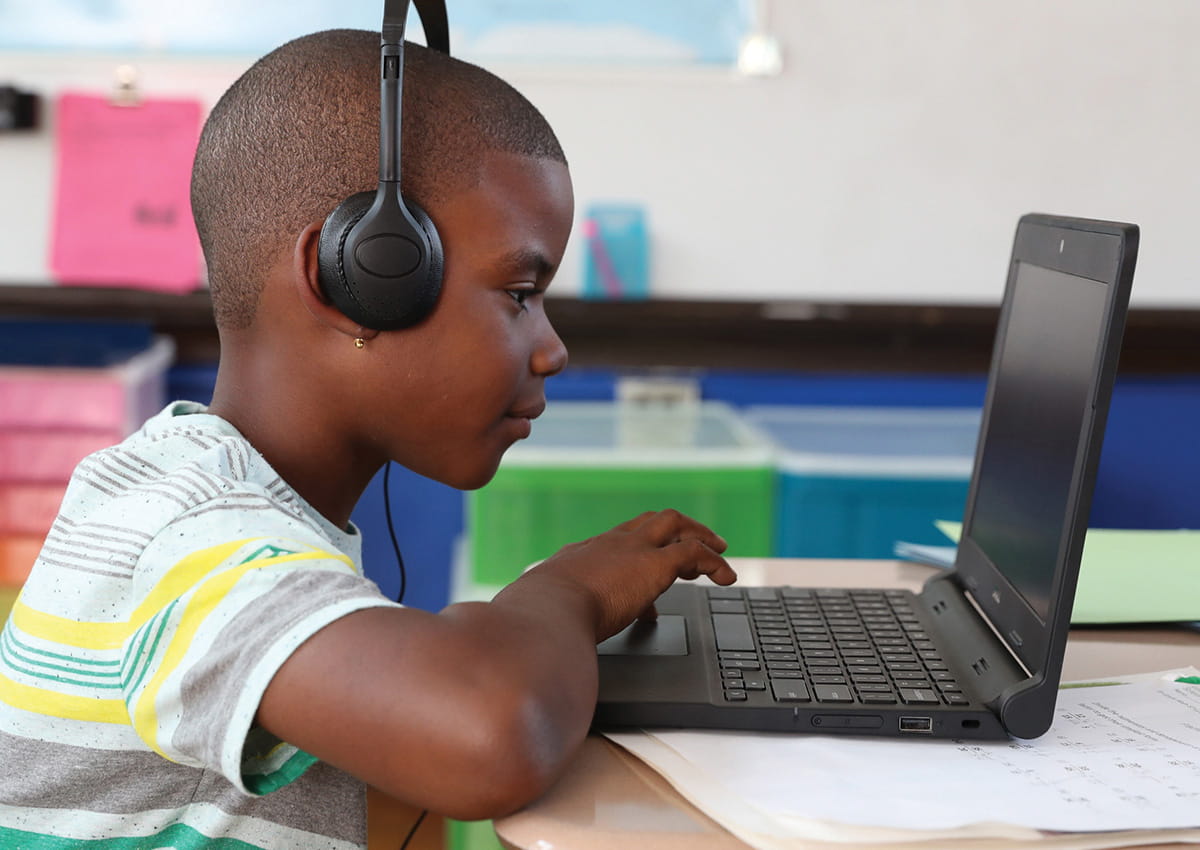How do we encourage students to keep learning over the summer even if they’re doing so from home?
Highland Elementary School in Riverside, Iowa started its popular online summer learning contest three years ago because of this very question. The i-Ready Summer Challenge began as an effort to keep learning going with students who weren’t attending summer school. In the first two years, about 30 of Highland’s 300 students participated in the challenge. However, last summer, one-third of the student body took part.
I recently spoke with Highland’s instructional coach, Janelle Sulhoff, who runs the i-Ready Summer Challenge, and Jane O’Leary, Highland’s principal, about their summer learning initiatives. During our conversation, they graciously shared how they structure their challenge, what resources they need, and other information to help other schools launch their own learning competitions.
Though Highland uses i-Ready Personalized Instruction for their challenge, educators can adapt the format described below for use with other programs.
How It Works
One of the great things about the i-Ready Summer Challenge is that it can run at the same time as summer school. Another great thing? The requirements are simple: Students are asked to complete 45 minutes of online personalized learning for both Reading and Mathematics for a total of 90 minutes per week.
After that, the steps are:
- Educators determine a time frame for the challenge. Highland runs their program for approximately six weeks during June and July.
- Families learn about the challenge in early spring. Highland posts about it on their social media accounts and sends flyers home with students. Pro tip: Make sure communications clearly explain expectations and give families someone to reach out to if they have questions.
- Once the challenge is underway, teachers track student usage and put the names of students who have completed 45 minutes in a subject into the weekly raffle. If a student completes the minutes in both Reading and Mathematics, their name will be added to both prize “buckets,” and they’ll have two chances to win a prize.
- During a virtual livestream, a teacher draws three student names in each subject each week. (Highland has their drawings on Mondays, so students have the weekends to work with their families.)
- Students whose names are drawn have the options of accepting a small prize immediately or receiving five tickets to use in a final raffle. In fully staffed challenges, teachers check in with students and families each week, answering questions and offering individual support for students.

What You Need
Personalized Learning Plans
Use data from your school’s interim assessment program (in Highland’s case, they used data from the i-Ready Diagnostic) to determine the lessons each student should focus on during the challenge.
Supervising Teachers
You can expand or simplify the challenge depending on how many educators you have available (more on educator involvement below).
Resources for Families
Help families understand your online learning program by creating simple screen recordings or sharing printouts that show them how to log in, check their student’s minutes, and troubleshoot.
Devices and Internet Access
Ensure every student who wants to participate in the challenge can do so by loaning devices and hotspots out for the summer.
Prizes
Gather small prizes, such as pencils and other school supplies for the weekly raffles, and larger prizes (e.g., LEGO® bricks, STEM activities, games) for the big, final raffle.
Teacher Responsibilities
In summer 2020, Highland couldn’t have their regular in-person summer school, which meant they had additional resources to dedicate to the i-Ready Summer Challenge. They were able to hire a teacher to supervise students in each grade.
Each week, these teachers would check i-Ready, send feedback forms to families, and check in with students who needed support with lessons. Depending on students’ needs, weekly check-ins could be as simple as responding to an email or as involved as scheduling a virtual meeting to go over lesson content one on one.
Teachers’ weekly commitment ended up being around five hours, and they oversaw approximately 10–25 students.
In 2018 and 2019, Highland’s challenge was simpler because they only had one educator to oversee it, and fewer students participated (i.e., 25–30 total). The supervising educator noted participating students’ minutes for each week and conducted the weekly raffle, but they weren’t able to offer individualized feedback.

Student Motivation
If you use data-tracking displays in your classroom, you know that friendly competition can be a huge motivator for students. In fact, when it comes to the i-Ready Summer Challenge, the competitive spirit often extends to students’ families.
The weekly raffle and regular social media updates also help keep students motivated, but the final celebration is what carries them over the finish line. A celebratory assembly in which students win prizes starts the new school year on a positive note, gives educators a chance to thank families for participating, and hopefully encourages even more students to take part in the next summer’s challenge.
LEGO® is a registered trademark of the LEGO Group, which does not sponsor, authorize, or endorse this company.









